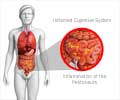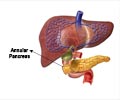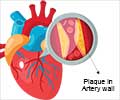Researchers have revealed that toxic byproducts produced by the breakdown of unsaturated fats lead to a higher likelihood of severe inflammation, among acute pancreatitis patients who are obese

Doctors have observed that obese people are at greater risk for adverse outcomes after trauma, severe burns, critical illnesses and acute pancreatitis, which is an inflammatory condition of the pancreas typically brought on by gallstones and alcohol, said senior author and UPMC gastroenterologist Vijay Singh, M.D., assistant professor, Division of Gastroenterology, Hepatology and Nutrition, Pitt School of Medicine.
"The mortality rate among patients with severe acute pancreatitis is 40 to 50 percent when kidney failure and respiratory failure develop," he said. "Our findings indicate that the breakdown of unsaturated fat in acute inflammatory conditions can lead to tissue damage throughout the body."
Dr. Singh's team examined pancreas tissue from 24 patients who died with acute pancreatitis and compared them to 50 people who died of other causes. They found that the diseased pancreases of patients who were obese, meaning a body mass index equal to or greater than 30, contained more fat cells, and confirmed the presence of fat from CT imaging scans from the patients taken before their deaths. Autopsy tissue showed also that there was more pancreatic cell death in the areas around fat cell destruction.
Pancreatic fluids from six obese patients with severe acute pancreatitis who had surgical procedures to remove dead tissue revealed high amounts of unsaturated fatty acids, produced from the breakdown of unsaturated fat, than saturated fatty acids. When the researchers combined healthy pancreatic cells with the unsaturated fatty acids in a test tube, the pancreatic cells died.
Then, they induced pancreatitis in obese mice and found that like the human patients, they had high amounts of fat in their pancreases. The fat in obese mice was mostly unsaturated. Kidneys of the mice with pancreatitis were damaged and contained fat deposits, an unexpected finding supported by studies in human autopsy tissue. Infusing unsaturated fatty acids into the bloodstream of the animals leads to lung injury akin to the problems seen in human patients, while administration of saturated fatty acids does not.
Advertisement
He and his team are studying ways to prevent the generation of unsaturated fatty acids in obese rodents to see what happens when they develop acute pancreatitis.
Advertisement
Source-Eurekalert















